Ramadan in the United Arab Emirates (UAE) is a time of deep spirituality, reflection, and community gatherings. As the call to Maghrib prayer signals the end of the daily fast, families and friends come together to enjoy traditional Emirati dishes passed down through generations.
How Is Ramadan Observed in UAE?
In the United Arab Emirates (UAE), Ramadan is a time of profound spiritual reflection, community bonding, and cultural celebration that leaves a lasting impact on the hearts of its residents. As in other Muslim-majority countries, fasting from sunrise to sunset is central to Ramadan in the UAE, but the country’s unique blend of tradition and modernity lends an added sense of vibrancy to the occasion.
As the sun sets, families across the UAE come together to break their fast with “iftar,” a meal that traditionally begins with dates and water and is followed by an array of flavorful dishes. While families gather in their homes, the sense of community extends beyond private walls. Hotels and restaurants throughout the country open their doors with lavish iftar buffets, ensuring no one is left alone during this sacred time.
The spirit of giving and charity characterizes Ramadan in the UAE. One of the emirate’s standout traditions is the “Ramadan tents,” hosted by government and private organizations, where people from all walks of life can share in breaking the fast. The act of charity goes beyond these large gatherings; many participate in “Iftar Saem,” providing meals for workers and those in need.
The nights in the UAE are transformed with special evening prayers known as “Taraweeh,” conducted in mosques nationwide. These prayers foster a sense of unity and devotion among the community, further enriching the spiritual atmosphere of this holy month. Moreover, shopping malls and public spaces host cultural events and activities that glimpse Islamic traditions and Emirati culture.
Beyond the physical aspects of fasting and feasting, Ramadan in the UAE is a period of introspection, where individuals reflect on personal growth and spiritual fulfillment. The blend of faith, charity, and communal spirit makes Ramadan a truly distinctive experience in the UAE, resonating with residents and visitors alike.
What Are the Traditional Ramadan Customs in UAE?
The UAE’s traditions during Ramadan beautifully intertwine faith, culture, and community, creating a deeply meaningful and festive atmosphere. One of the most cherished customs is gathering with family, friends, and neighbors for Iftar meals, which often feature beloved traditional dishes such as harees, machboos, and lamb ouzi. These meals are more than just a time to break the fast; they are a celebration of togetherness and shared heritage.
Generosity and charity are central to the spirit of Ramadan in the UAE. Many families and organizations prepare extra meals to share with those in need, while others contribute to charitable initiatives, ensuring that everyone can partake in the blessings of the holy month. This emphasis on giving reflects the core Islamic values of compassion and solidarity.
For children, the local tradition of Haq Al Laila adds a touch of joy and excitement. Celebrated on the 15th night of Sha’ban (the month before Ramadan) or sometimes during Ramadan itself, children dress in traditional attire, carry colorful bags, and go door-to-door singing songs and collecting sweets and nuts. This delightful custom fosters a sense of community and keeps cultural traditions alive for younger generations.
Adults, on the other hand, focus on deepening their spiritual connection through acts of worship, such as nightly Taraweeh prayers, Quran recitation, and personal reflection. The nights come alive with the hum of prayers and the warmth of community gatherings, as mosques and homes buzz with activity. The atmosphere is further enriched by the glowing decorations of lanterns and lights that adorn streets, malls, and homes, symbolizing the spiritual illumination of Ramadan.
What Are the Best Foods to Try During Ramadan in UAE?
After a long day of fasting, UAE iftar tables are filled with various traditional dishes that are both flavorful and nourishing. Emirati cuisine offers a unique Ramadan experience, blending rich flavors and aromatic spices that unite communities during this special month. From hearty dishes like Machbous, a spiced rice dish typically made with chicken or lamb, to sweet treats like Luqaimat and fried dough balls drizzled with date syrup or honey, the culinary offerings will captivate your senses.
In this article, we’ll show you 8 of the best UAE dishes you must try during Ramadan.
Harees
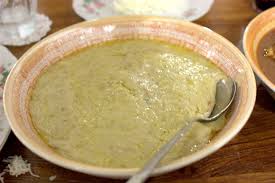
One of the most beloved dishes during Ramadan in the United Arab Emirates is harees, a wholesome and comforting meal that is both satisfying and nourishing after a day of fasting. Harees is made with a simple combination of wheat and meat, typically chicken or lamb, slow-cooked until the ingredients meld into a smooth and creamy porridge-like consistency. Seasoned with a touch of salt and sometimes enhanced with ghee, its simplicity makes it unique.
What sets Harees apart is its cultural significance in the UAE. It’s a staple on iftar tables across the country and is often shared with neighbors and loved ones as a gesture of generosity and community spirit. This humble yet hearty dish warms the stomach and heart, embodying the essence of Ramadan’s focus on unity and togetherness. Harees are not just food; they symbolize Emirati heritage and remind us of the shared values that connect communities across the UAE during the holy month.
How to Make Traditional Harees
Want to make authentic Harees at home? This step-by-step recipe will guide you in preparing this creamy, slow-cooked wheat and meat dish, a staple in Middle Eastern cuisine, especially during Ramadan. Follow along for a warm, comforting meal perfect for suhoor or iftar.
Thareed
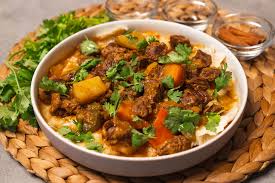
A beloved dish in the United Arab Emirates, Thareed is a comforting and hearty meal that perfectly showcases the country’s rich culinary heritage. This traditional dish combines tender meat—often chicken or lamb—with fresh vegetables such as carrots, potatoes, and zucchini, all simmered in a richly spiced broth. A unique feature of Thareed is the use of thin, flat bread, traditionally known as regag, which is layered at the bottom of the dish to soak up the flavorful broth.
The bread becomes beautifully soft yet retains enough texture to contrast the tender meat and vegetables. Thareed holds particular significance during Ramadan, as it allows for a nourishing and filling meal after fasting, supporting the energy needs of those observing the holy month. The dish embodies simplicity and complexity, celebrating using wholesome ingredients and time-honored cooking techniques. Sharing Thareed with family and friends is a cherished tradition, highlighting the warmth and hospitality central to UAE culture.
Machboos
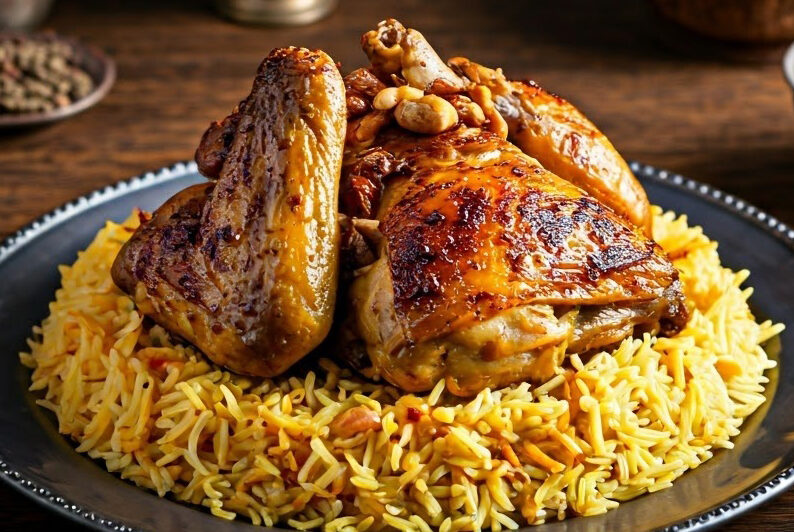
Machboos is a beloved traditional dish in the United Arab Emirates, especially during the holy month of Ramadan. This flavorful meal, which consists of spiced rice often accompanied by meat such as chicken, lamb, or fish, holds a special place in the hearts of many Emirati families. During Ramadan, the time of fasting and reflection, Iftar — the meal to break the fast — becomes an opportunity to gather family and friends around the dinner table, and Machboos is often the star of the feast.
One of the key reasons Machboos is so popular during Ramadan is its hearty nature. After a long day of fasting, this dish provides the nourishment and energy needed to restore and rejuvenate the body. Rich in essential nutrients, the ingredients of Machboos are thoughtfully chosen to create a balanced meal. The aromatic spices such as turmeric, cinnamon, cloves, and cardamom enhance the flavor and are known for their digestive and health benefits, making them an ideal choice for a post-fast meal.
Luqaimat
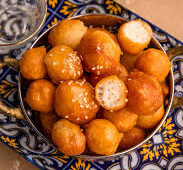
Another beloved dish during Ramadan in the UAE is Luqaimat, a sweet treat that captivates the young and the old. These golden, bite-sized dumplings are made from simple flour, yeast, and cardamom dough. They are deep-fried to achieve a crisp exterior while remaining soft and fluffy inside. Luqaimat is traditionally drizzled with date syrup or honey, adding a rich sweetness that perfectly complements their texture.
During Ramadan, Luqaimat is often served as a delightful dessert after iftar meals or a treat to share during social gatherings. The preparation of Luqaimat is not just about the food itself but also the act of bringing families together. Many Emirati households take pride in perfecting their recipes, and the joy of making and sharing these little delights fosters a sense of togetherness. Luqaimat’s sweet and aromatic profile embodies the warmth and generosity of Emirati culture, making it an enduring favorite during this special time of the year.
Balaleet
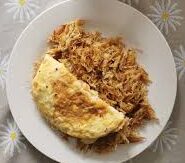
Balaleet is a traditional Emirati dish often enjoyed during the holy month of Ramadan in the United Arab Emirates. This unique dish typically served as a breakfast item, is a delightful combination of sweet and savory flavors that tantalizes the taste buds and is a favorite among locals and tourists alike.
During Ramadan, Muslims fast from dawn until sunset, making the pre-dawn meal, Suhoor, a crucial part of their daily routine. Balaleet is frequently chosen for Suhoor due to its rich and satisfying nature. It consists primarily of vermicelli noodles cooked with sugar and spices such as saffron and cardamom, topped with a well-seasoned omelet. The delicate balance between the sweetness of the noodles and the savory omelet creates a comforting start to the fasting day.
The dish offers a delicious flavor profile and provides a good source of carbohydrates and proteins, essential for sustaining energy levels throughout the fasting period. In addition to being a popular Suhoor choice, Balaleet is also enjoyed during Eid al-Fitr, a festive celebration marking the end of Ramadan, when families gather to indulge in a breakfast spread of traditional dishes.
Samboosa
Samboosa is a beloved staple during Ramadan in the United Arab Emirates, cherished for its delicious taste and the sense of tradition it embodies. As one of the most sought-after snacks during the holy month, samboosa combines flavor and cultural significance, making it an essential part of the iftar feast.
During Ramadan, after a day of fasting, families in the UAE gather in the evenings to break their fast with iftar, a meal that begins with dates and water, followed by an array of diverse dishes. Samboosa, with its crispy exterior and savory filling, often takes center stage at this meal. The filling, ranging from spiced meat to vegetables or cheese, offers something for everyone, catering to various palates and dietary preferences.
The preparation and enjoyment of samboosa during Ramadan in the UAE is not just about taste but also about bringing families together. These triangular pastries often involve multiple family members, from rolling out the dough to carefully wrapping the filling inside. This culinary collaboration fosters community and shared responsibility, reinforcing familial bonds.
Madrooba
During Ramadan in the UAE, Madrouba is cherished on iftar tables, providing a wholesome and nourishing meal after fasting. Its creamy texture and hearty ingredients make it ideal for replenishing energy and bringing families together in the spirit of sharing and gratitude. The slow preparation of Madrouba mirrors the patience and reflection fostered during the holy month, while the aromatic spices and comforting flavors reflect the essence of Emirati hospitality. Whether enjoyed in a quiet family setting or during larger communal gatherings, Madrouba is a delicious reminder of the culinary and cultural traditions that make Ramadan in the UAE so special.
Jasheed
Jasheed, an annual tradition celebrated in the UAE during Ramadan, holds a special place in the hearts of many families. During this holy month, Muslims worldwide fast from sunrise to sunset, breaking their fast with a meal known as iftar. In the UAE, Jasheed is often part of this meal, offering a taste of cultural heritage and tradition.
Jasheed is a flavorful dish made primarily from flaked fish, typically shark or other locally available fish. It is mixed with a variety of spices, herbs, and sometimes vegetables, creating a savory and aromatic dish. The preparation of Jasheed varies from family to family, with each adding their unique touch to the recipe, yet the essence remains the same—a reflection of the rich culinary heritage of the UAE.
conclusion
Ramadan in the United Arab Emirates blends deep-rooted traditions, delicious cuisine, and strong community bonds. From the hearty Harees to the sweet Luqaimat, every dish tells a story of Emirati culture and heritage. If you ever experience Ramadan in the UAE, don’t miss out on these must-try dishes that make the holy month even more special!
Explore More Delicious Ramadan Dishes:
Signature Ramadan Meals of Tunisia
Must-Try Ramadan Dishes in Algeria
Historical Ramadan Dishes of Egypt
Must-Try Ramadan Dishes in Qatar | Traditional Qatari Iftar Foods
Ramadan Delicacies from Jordan You Need to Taste
Ramadan Foods Rich in Tradition from Sudan: Must-Try Dishes
